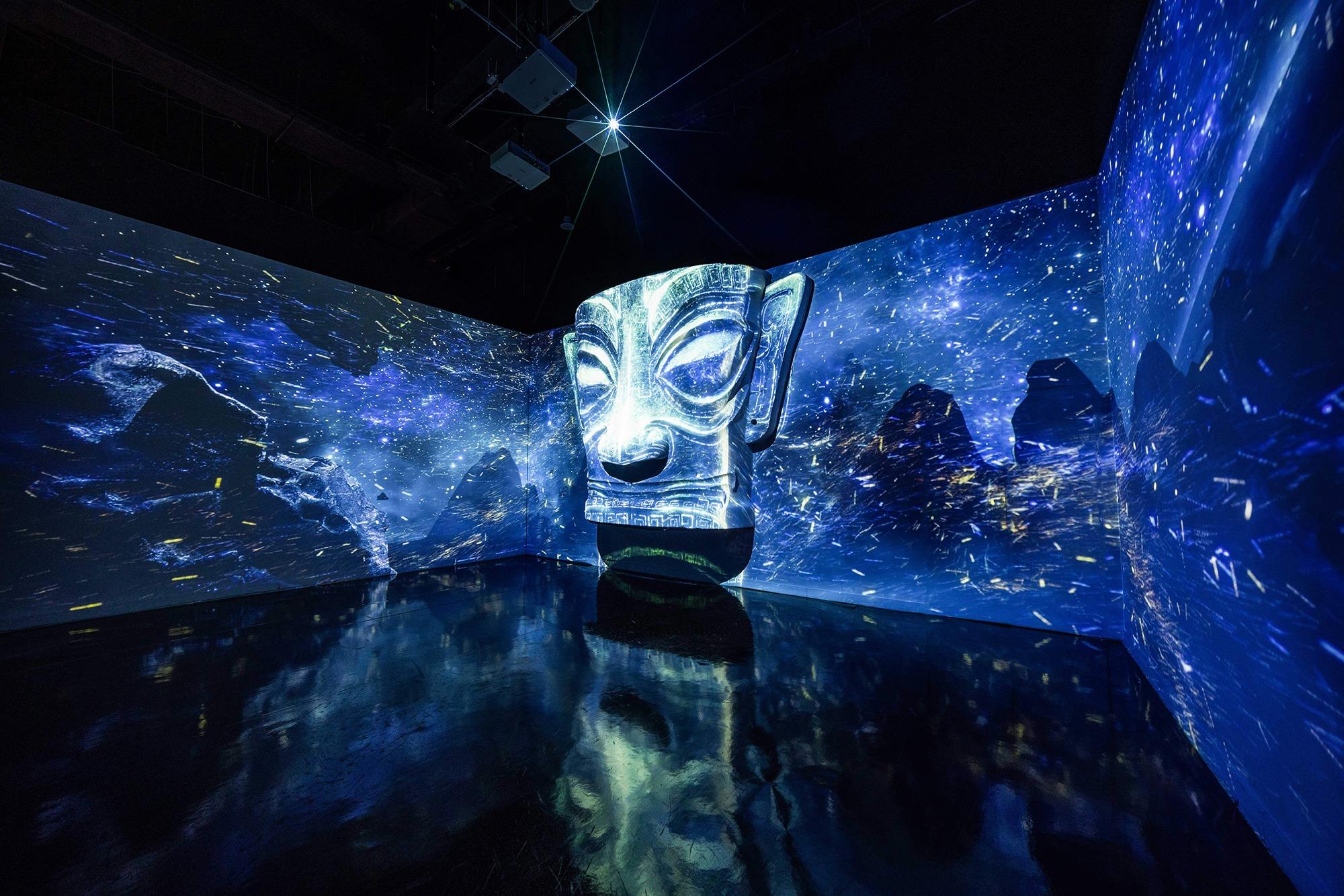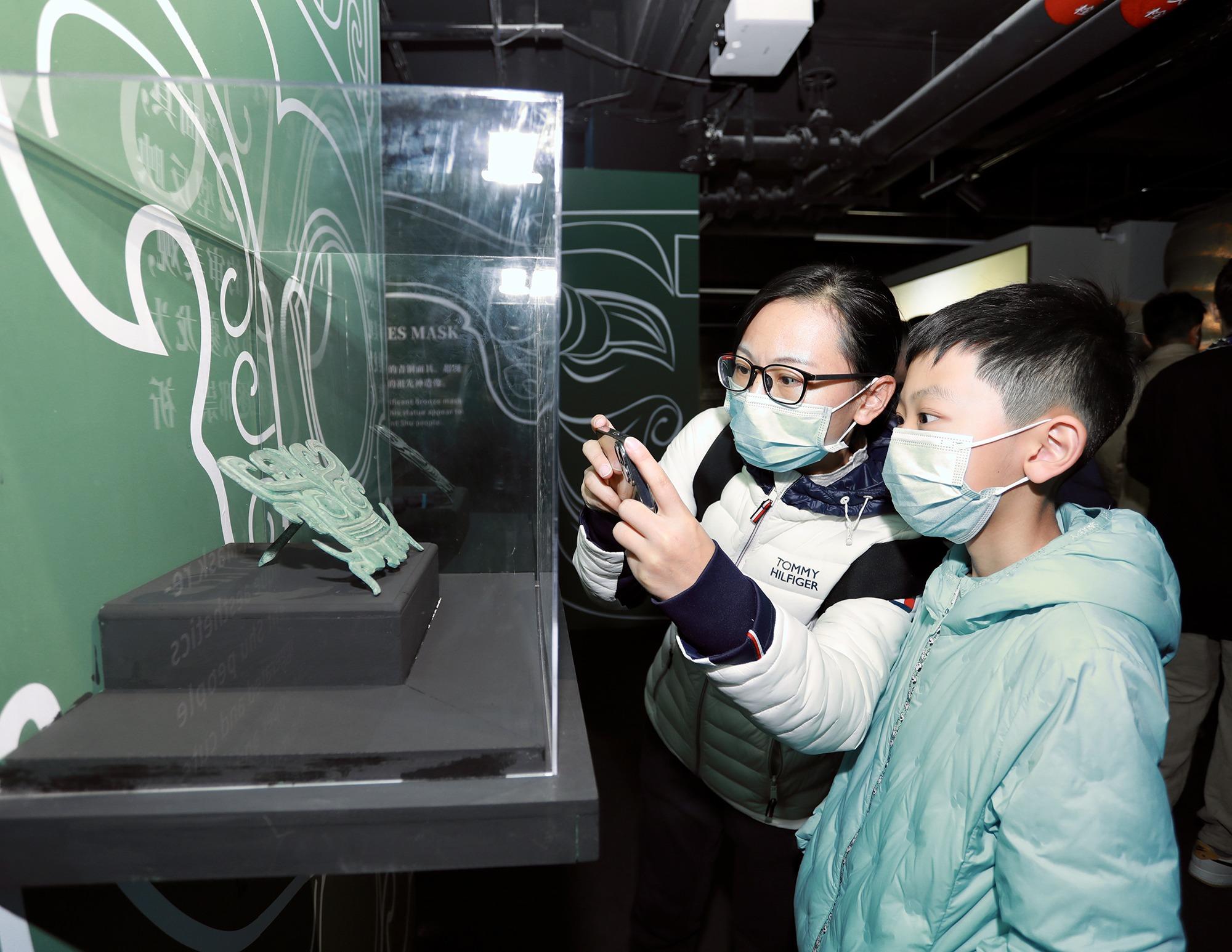 The exhibition, Hello Sanxingdui, brings to people an immersive experience of the booming days of Sanxingdui culture. (PHOTO PROVIDED TO CHINA DAILY)
The exhibition, Hello Sanxingdui, brings to people an immersive experience of the booming days of Sanxingdui culture. (PHOTO PROVIDED TO CHINA DAILY)
The recent opening of a new exhibition building at the Sanxingdui Museum, in Guanghan, Sichuan province, made the venue an instant tourist hot spot. The turquoise-eyed bronze heads, golden masks, holy trees, ceremonial altars and deity statues reveal the mysterious faces of a culture dating back more than 3,000 years.
For those who cannot make it to Guanghan, where the extensive excavation site of Sanxingdui is located, an immersive exhibition equipped with digital technology, titled Hello Sanxingdui, offers an alternative means to be awed by the magnificence of this Bronze Age culture. It is running at the Longfu Art Museum in Beijing until Feb 29.
It provides a time-travel experience with both an educational and artistic appeal. The journey begins with a brief timeline of texts, photos and videos, showing how Sanxingdui was first discovered in the 1920s, when objects were found by farmers digging an irrigation ditch; and it highlights the important moments in the past century's continued archaeological efforts, to reveal the myths surrounding Sanxingdui and the secrets yet to be decoded.
On show are life-size reproductions of dozens of astonishing artifacts, supervised by Sanxingdui Museum, such as 2.6-meter bronze statues, 3.8-meter-wide bronze masks and "the holy tree" standing nearly 4 meters.
 Visitors appreciate and zoom in on reproductions of Sanxingdui artifacts on show. (PHOTO PROVIDED TO CHINA DAILY)
Visitors appreciate and zoom in on reproductions of Sanxingdui artifacts on show. (PHOTO PROVIDED TO CHINA DAILY)
Images of these objects found at Sanxingdui and their patterns have been digitalized, animated and projected on screens, to the accompaniment of music, ushering the audience into the ancient kingdom of Shu, a civilization that thrived for centuries in the southwest during the Zhou Dynasty (c. 11th century-256 BC), and disappeared abruptly, leaving many myths and legends.
Ren Ren, from the Sanxingdui Scenic Area Management Committee, says that, since archaeological excavations first took place at the Sanxingdui site in the early 1930s, people's knowledge of the site and its treasures has been greatly enriched. "Developing new platforms to provide updates on the findings of Sanxingdui to the general public with the aid of digital technology has been on the agenda," he says.
"Staging an immersive exhibition brings Sanxingdui closer to people, no matter where they are. By turning the inanimate artifacts into an audiovisual show, the experience also provides the audience a glimpse of the magnificence of the Shu kingdom and its cultural features, all of which have been preserved in Sichuan," Ren says.
Having been introduced to the general public a century ago, the reach of Sanxingdui feels greater these days, as the market for creative products related to the ancient site and its artifacts has grown. A musical inspired by Sanxingdui was staged in Beijing from Nov 16 to 19, and will tour other cities; Meet Ancient Shu, another immersive show, will open at the Meet You Museum in Beijing's 798 art zone in early December.
Tan Ping, head of Art Exhibitions China, one of the producers of Hello Sanxingdui, says it is of vital importance to inform the general public about archaeological discoveries and developments in relevant research, while it relies on new ideas and techniques to bring people innovative cultural experiences. He says an exhibition like Hello Sanxingdui will engage people with a vision of life in the Shu kingdom, "to see how they lived, the stories they were telling for generations and their creativity to produce the objects which still inspire awe in people three millennia later".


